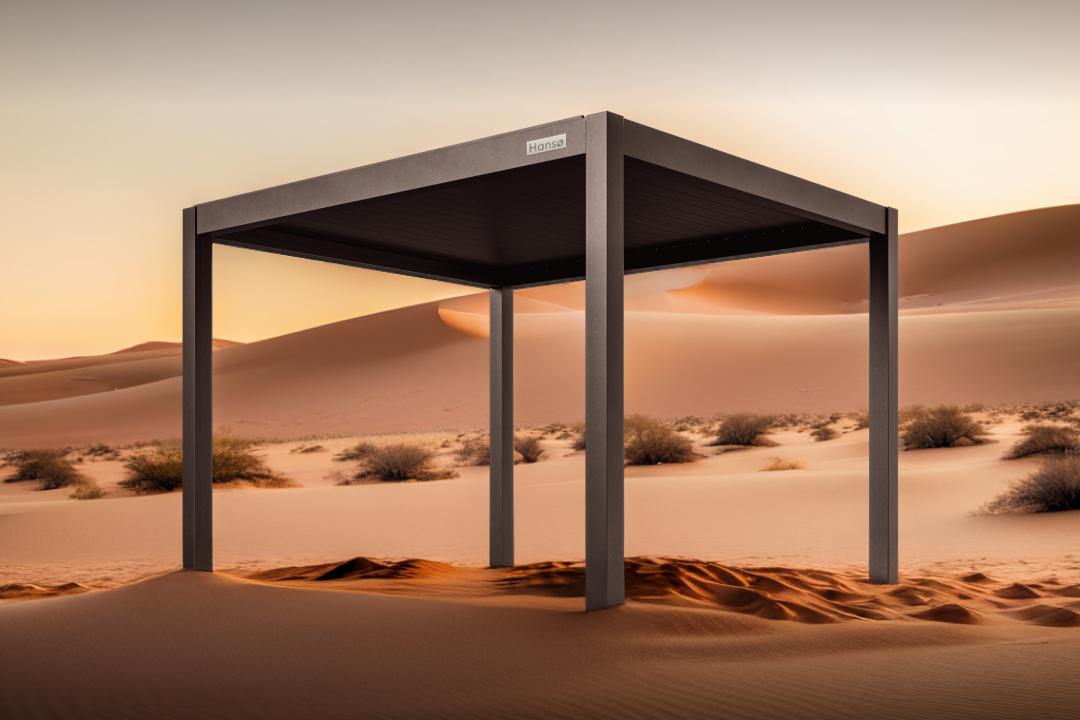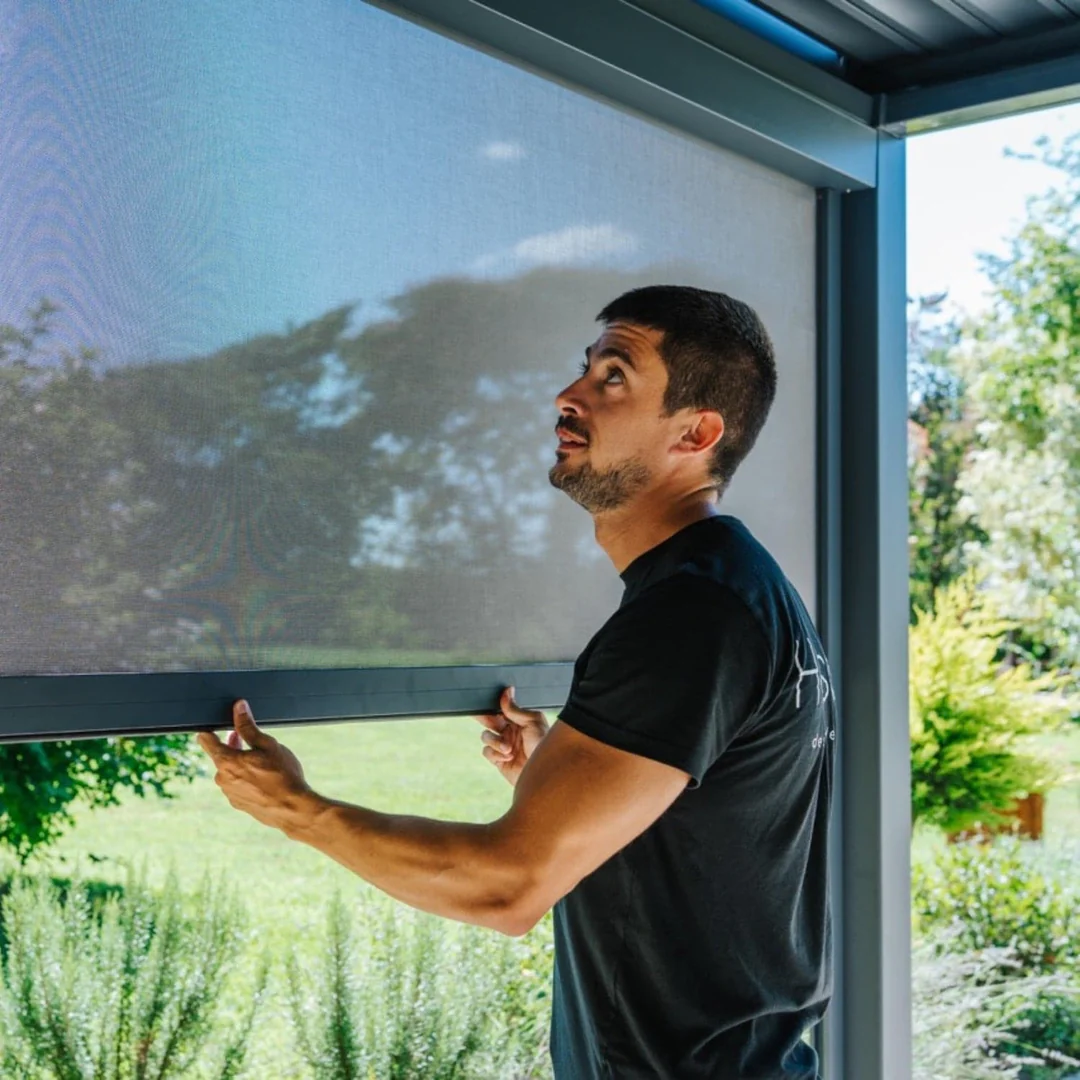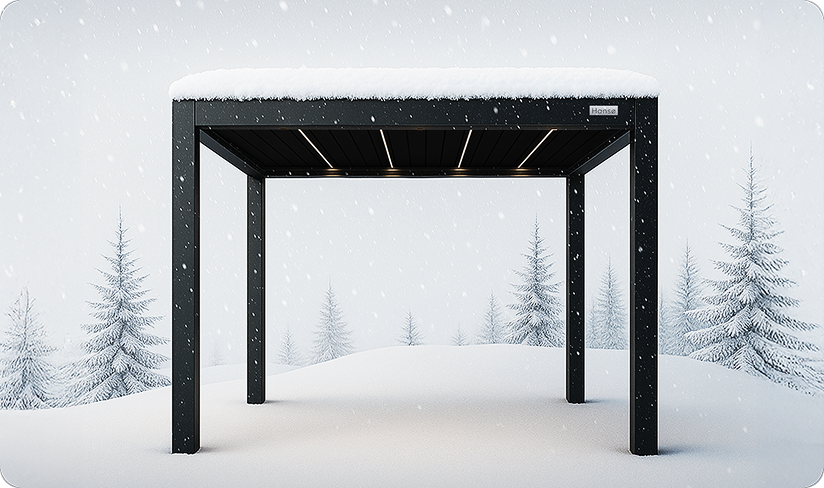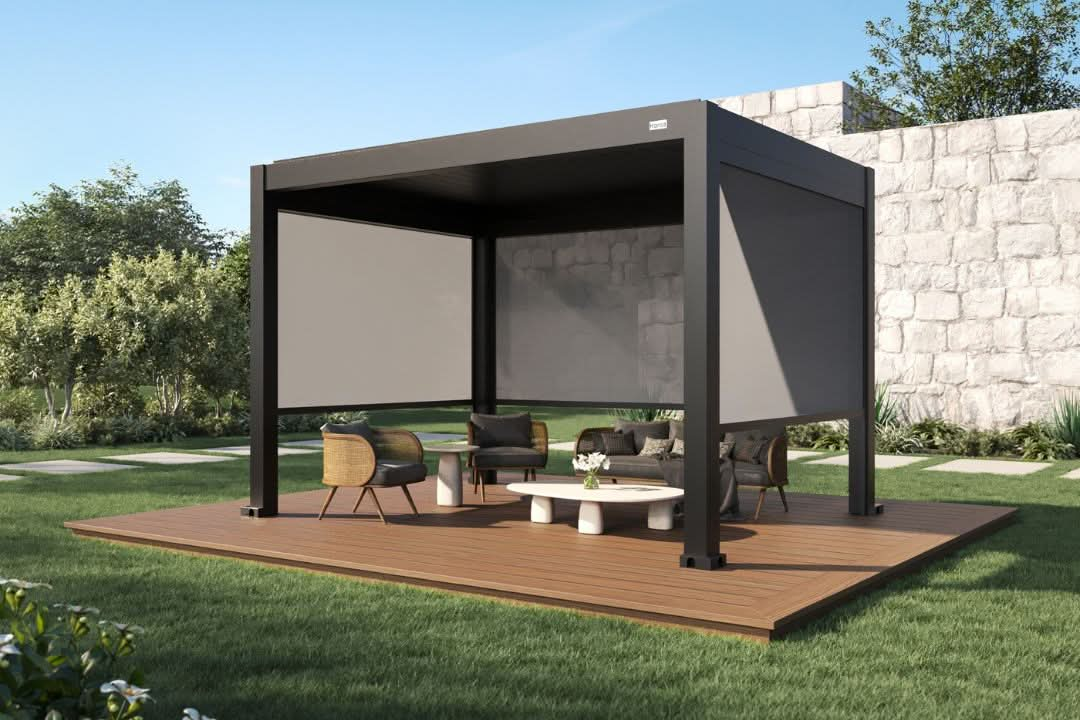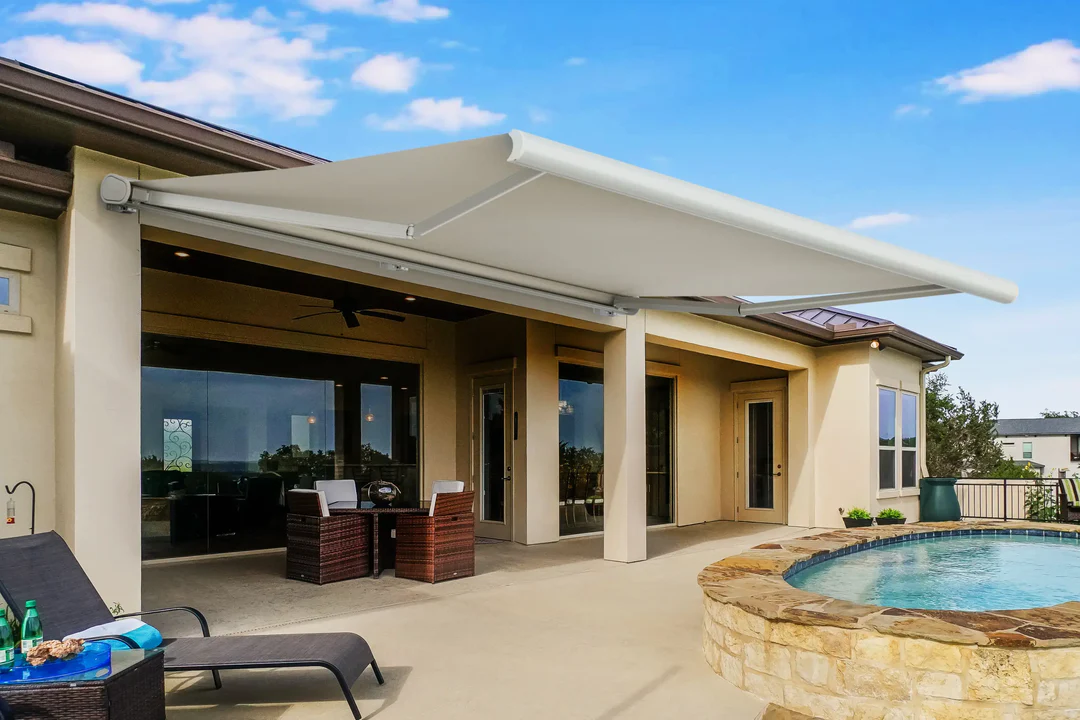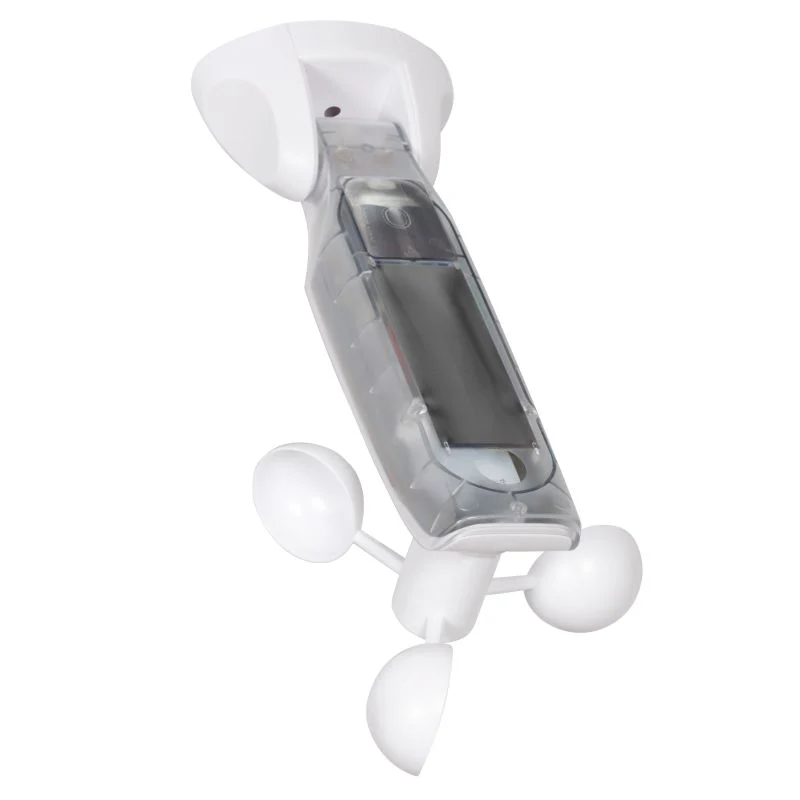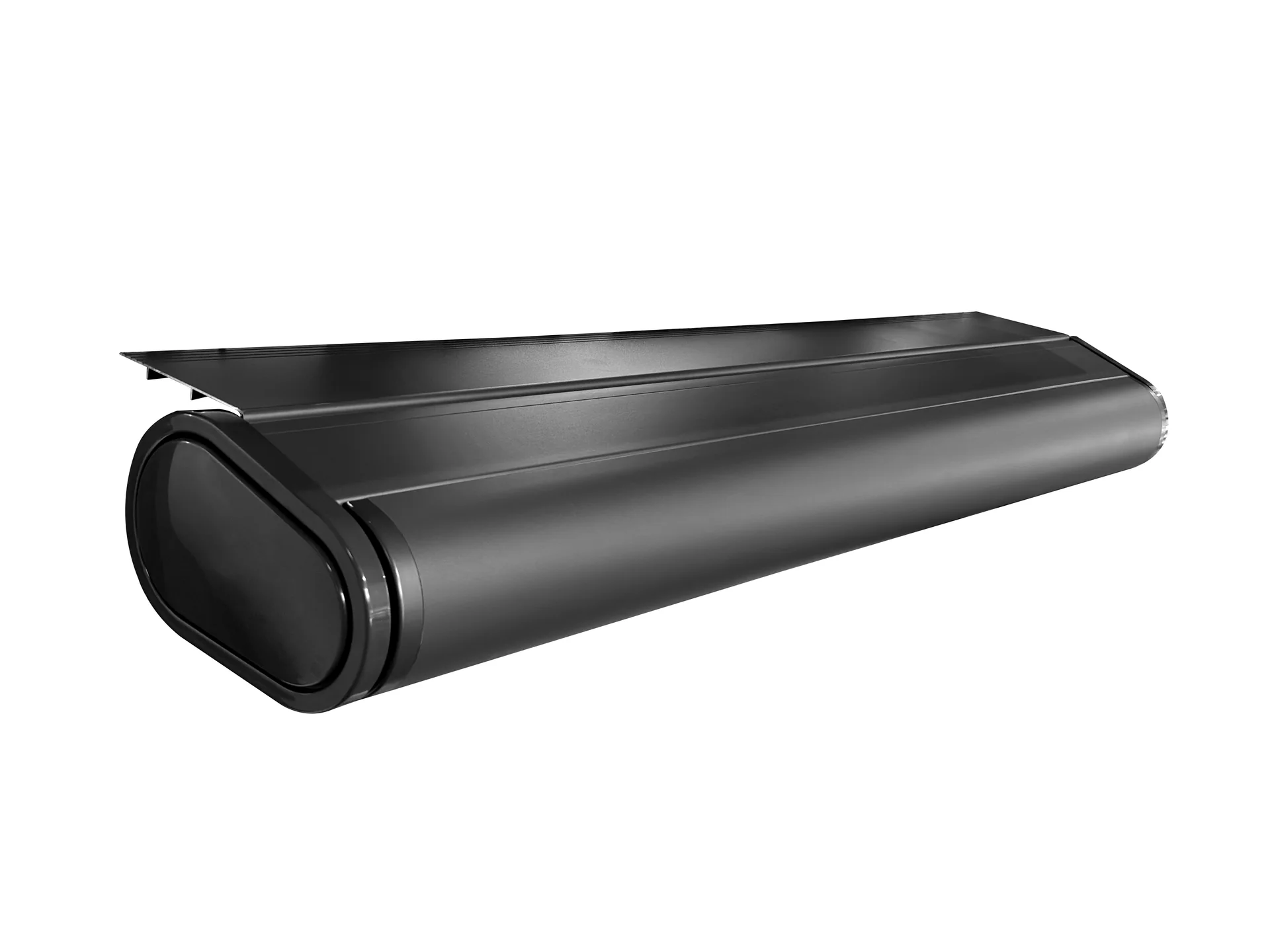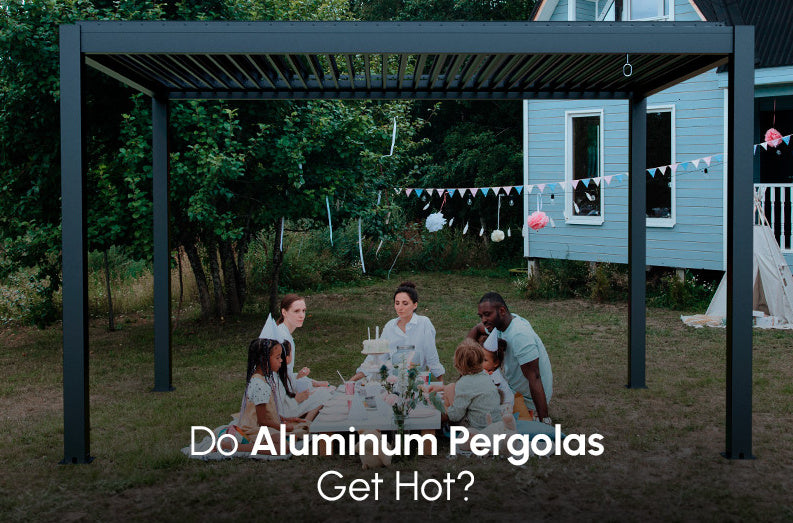What Direction Should a Pergola Face? Placement Guide
Are you looking to enhance your outdoor living space with a pergola, but unsure about the ideal direction it should face?
Discover how the orientation of your pergola can enhance the shade and style of your outdoor space.
In this article, we will explore what direction should a pergola face and what is the ideal placement. How it can improve your outdoor living experience?

Optimal Shade from a Pergola: What Direction Should it Face?

The orientation of a pergola is of utmost importance when it comes to optimizing shade and practicality.
Pergolas make for a splendid enhancement to your outdoor private space, be it a backyard or patio.
However, the extent of sunlight cover they offer is contingent on the direction they face.
-
A pergola oriented towards the east will bask in the warm glow of the morning sun and offer a cool respite in the afternoon.
-
Conversely, a pergola facing west will be bathed in the afternoon sun and offer a refreshing shade in the morning.
You might ask, which one is more practical?
Here's the deal:
For those who relish spending their mornings amidst nature, savoring breakfast, reading or simply unwinding in their outdoor living area, a pergola that faces the east direction could prove to be an excellent choice.
The diurnal star's early rays will create a cozy and hospitable ambiance while maintaining a temperate climate that is pleasant to experience without causing discomfort. As the diurnal cycle advances, the solar orb will gradually shift its position towards the western horizon, and the pergola will consequently cast a greater shadow, offering a desirable respite from the scorching temperatures. This renders the location an optimal setting for leisurely repose during the peak hours of solar intensity.
Alternatively, for individuals who relish spending their leisure time outdoors, hosting guests, or indulging in family dinners, a west-facing pergola would be a more suitable option.
The solar radiation emitted by the afternoon sun can generate a pleasant and hospitable ambiance, and it may also serve as a source of thermal comfort in chilly weather conditions.
As the diurnal cycle draws to a close and the crepuscular period ensues, the pergola shall proffer a revitalizing shade, rendering it an ideal milieu for conviviality and relaxation subsequent to a protracted day.
Does a Pergola Block The Sun?
Although pergolas provide some shade, it is not fully shaded structure. The slats, beams and rafters of the pergola permit a pleasant amount of sunlight to pass through, resulting in a stunning dappled effect.
It is crucial to take into account the direction in which a pergola is facing in order to achieve the ideal balance of shade and sunlight.
Anyway, we always highly recommend purchasing pergola sun shades and your worries will be solved.
Moreover, if you want to block as much sun as possible, your louvres, should be installed so that their long sides face north.
Use Natural Shade to Your Advantage
Keep in mind that it is important to maximize the cover given by trees and other structures in your yard when deciding where to put your pergola.
Building a pergola kit beneath the shadows of your garden trees will greatly improve the quality of your time spent outside. It is one of the best ideas to get extra shade out of your pergola.
The Best Place for Your Pergola

-
Near water: Strategic placement of your pergola in close proximity to a water feature, such as a pond or fountain, can effectively enhance the overall ambiance of outdoor living spaces by inducing a sense of serenity and tranquility. The auditory sensation of cascading water has the potential to mask extraneous sounds and contribute to an overall tranquil atmosphere.
-
As a transition space: Pergolas can be utilized as an effective transition space for gardens that feature multiple levels or distinct areas. Incorporating a pergola into the design of a garden path leading to a seating area can elevate the aesthetic appeal of the space while also providing functional benefits such as shade and visual interest.
-
In a sunny spot: Pergolas, although commonly utilized for shading purposes, can also be strategically positioned in areas with ample sunlight to establish a cozy and welcoming alfresco living area. This can prove to be an excellent choice if you desire to fashion a bright and cheerful nook for indulging in leisurely reading or unwinding.
-
Near trees: Placing your pergola near trees can create a natural and shadowed area. The trees can provide additional cover and privacy, and you can also use them to hang lights or decorations.
-
As a focal point: A pergola can serve as a beautiful focal point in your garden or backyard. You can place it in the center of a flower bed or near a sculpture or other piece of outdoor art to create a stunning and inviting outdoor living space.
What's The Perfect Pergola Orientation For Your Home?
In conclusion, the perfect pergola orientation depends on the location of your house and how you use your outdoor space.
- If you use your outdoor living space as a dining area, a pergola facing east will provide shade during dinner time.
- If you use your outdoor space in the afternoon, a pergola facing west will be more beneficial.
Orientation also depends on the type of pergola you want to build. Freestanding pergolas can face any direction, while attached pergolas need to face the house to create a cohesive look.
Pergola kits come in different types, and their orientation will depend on the materials and construction of the structure.
Pergola pointing toward the north will not provide as much shade as a pergola looking toward the east or west direction.
Still, it can generate a comfortable patio space during the summer months while allowing sunlight to filter through. A pergola can get too hot directing south during the summer months and require additional sun shades to make it more comfortable.

